Visit of Professor Hiroshi Amano, Nagoya University, Japan
11 April, 2025
On the 3rd and 4th of April, the UoB CDTR group had the honour of welcoming world- renowned physicist Professor Hiroshi Amano, Nagoya University (NU), Japan, as part of an exchange program supported by the British Council International Science Partnerships Fund (ISPF) which will see scientists from NU and the CDTR, School of Physics, led by Professor Martin Kuball, join forces to further high-efficiency power semiconductor technology.
During his visit, Professor Amano visited the School facilities, shared his knowledge and expertise in informal discussions with researchers and PhD students, and gave an insightful talk entitled “The Challenge of Social Implementation of WBG and UWBG Semiconductor Devices, which attracted considerable interest among the UoB community.
Professor Hiroshi Amano received the 2014 Nobel Prize in Physics, jointly with Professor Isamu Akasaki and Professor Shuji Nakamura for the invention of efficient blue LEDs, light-emitting diodes, enabling bright and energy-saving white light sources. He is currently the Director of the Center for Integrated Research of Future Electronics, and Professor at the Institute of Materials and Systems for Sustainability, Nagoya University, where he develops technologies for the fabrication of high-efficiency power semiconductor development and new energy-saving devices.
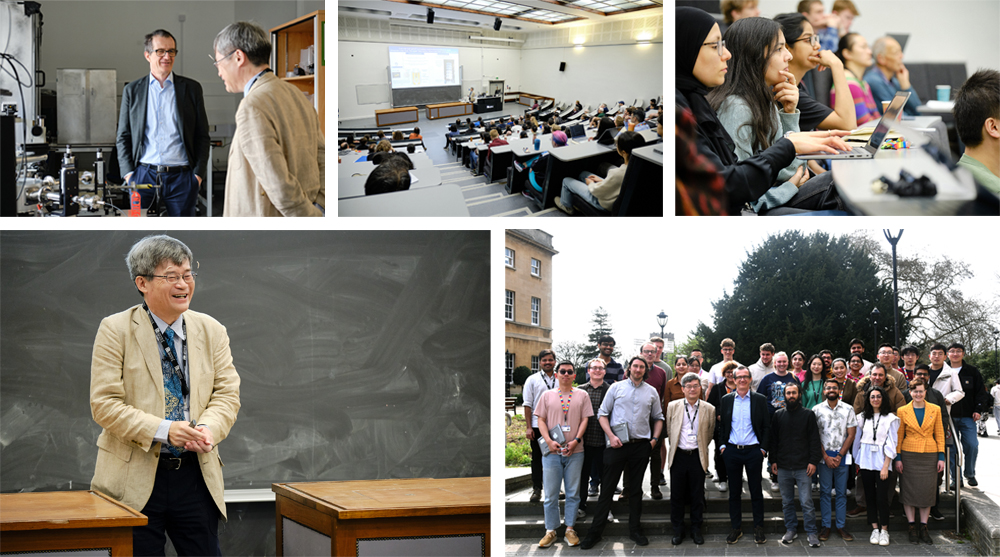
Images from top to bottom and left to right: Professor Amano and Professor Martin Kuball at the CDTR labs; talk by Professor Amano; attendees at talk; UoB Researchers and students pose with Professor Amano at the Royal Fort Gardens.
UK and Japan scientists set to supercharge semiconductor microchip technologies in the race to reach Net Zero
25 March, 2025
Top experts from the University of Bristol, in the UK, and Nagoya University, in Japan, are working together to drive forward innovation in semiconductors, also known as microchips, and electronic devices which hold the key to reducing emissions and making energy-efficient travel more user-friendly.
World-renowned physicist Professor Hiroshi Amano, a Nobel Prize winner, will visit the University on April 2025 to share his knowledge and expertise with researchers and PhD students as part of an enterprising exchange programme to further high-efficiency power semiconductor advances.
Read more
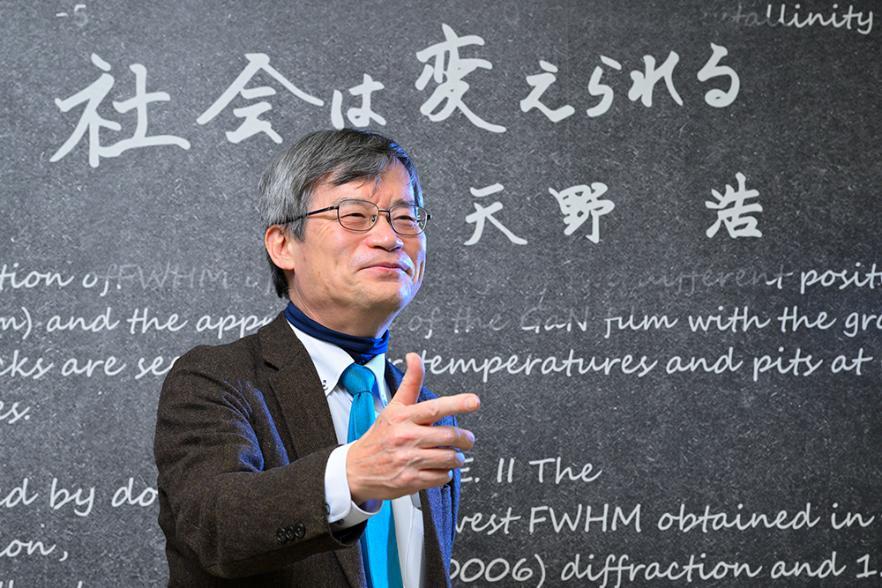
Prelaunch event held for new £11m REWIRE Innovation and Knowledge Centre
13 March, 2024
UKRI’s Innovation and Knowledge Centre REWIRE, a £11M programme led by Professor Kuball, from the School of Physics at the University Bristol, in collaboration with Engineering and the School of Business at Bristol, and partners from the University of Cambridge and Warwic, kicked off with a prelaunch meeting on 12 March. We were excited to host Jane Nicholson from EPSRC, and Richard Duffy from DSIT, among other distinguished guests and representatives of the collaborating universities. REWIRE will develop the next generation of semiconductor power electronics helping to accelerate the electrification of our society on UK’s partway to Net Zero, and generating business and employment for the UK with the commercialization of this technology. For example, would it not be exciting to be able to charge an electric vehicle in less than 10min ? Would we not all benefit from a better feeding in of renewable energy sources into our national grid with less energy loss?
The event highlighted UK governments’ UK National Semiconductor Strategy, presented by Richard Duffy, and reviewed REWIRE’s aims targeted, presented by Professor Kuball, followed by Dr Saeed Jahdi, Dr Minhao Zhang and Professor Palie Smart from the University of Bristol; we were able to highlight to EPSRC and DSIT our strength in wide and ultrawide bandgap compound semiconductors and the exciting and innovative projects we will develop in REWIRE, via our state of the art semiconductor growth, fabrication and testing laboratories. The event concluded with an informal reception with our Vice Chancellor Evelyn Welch at Stuart House. A full REWIRE launch event with all of our industrial partners will follow later in the year.
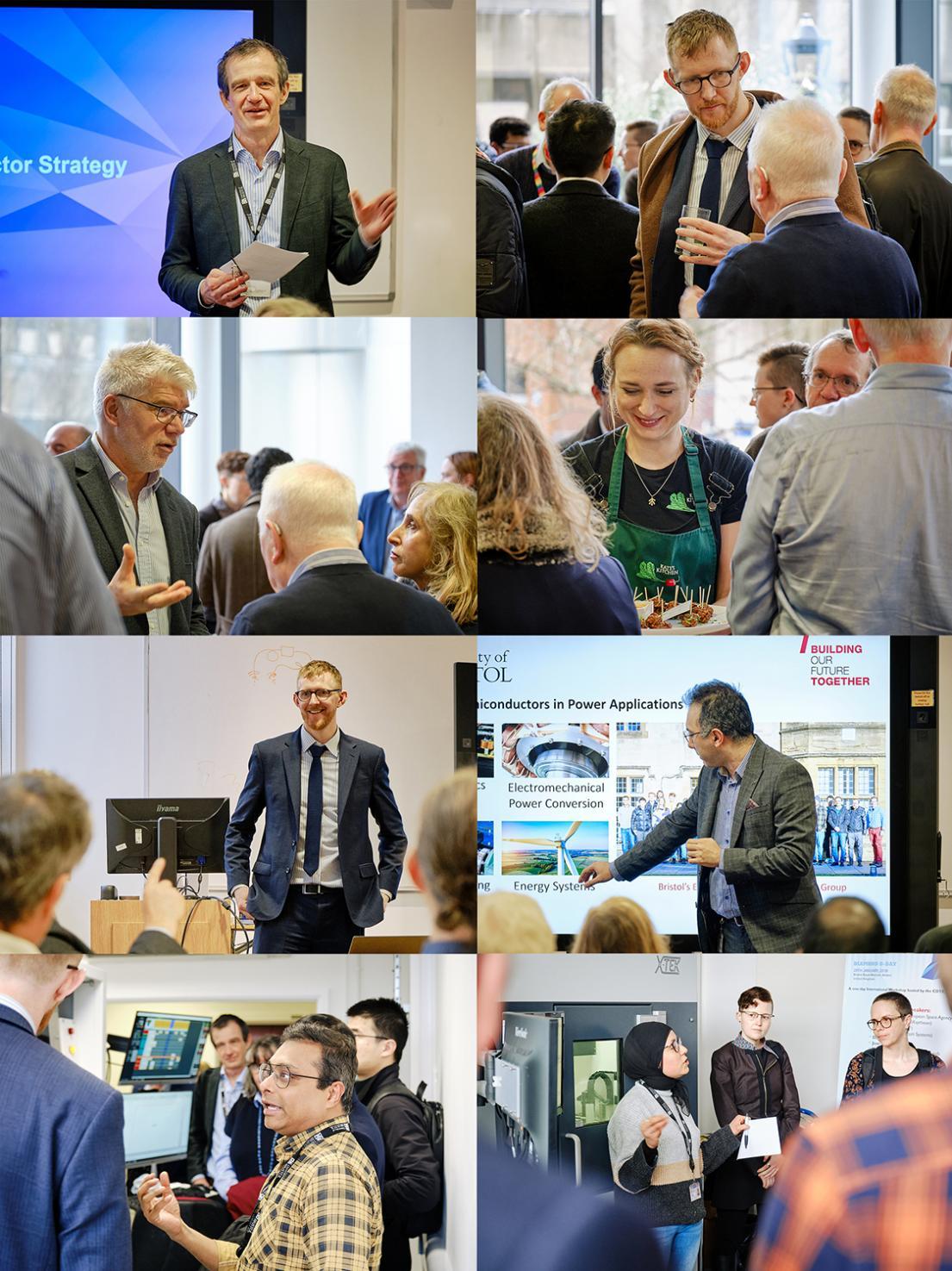
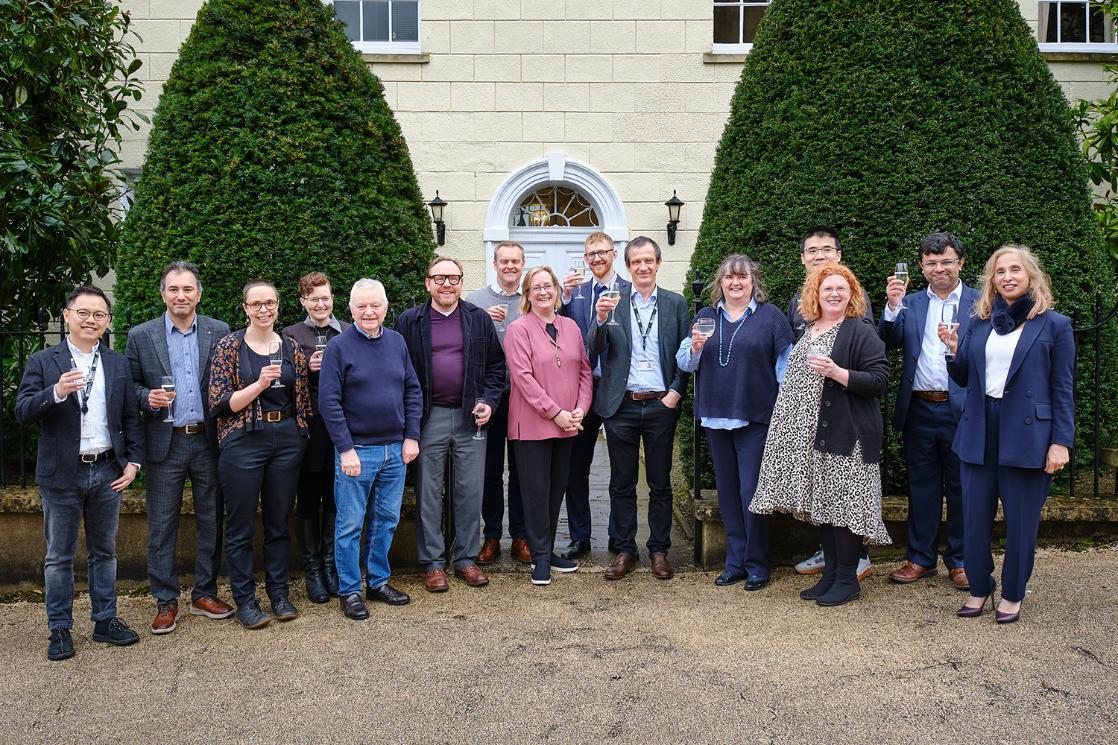
Read more: https://www.bristol.ac.uk/news/2024/march/ikc-rewire-prelaunch.html
New Innovation and Knowledge Centre (IKC) for semiconductor research led by University of Bristol
07 February, 2024
Led by Professor Martin Kuball, University of Bristol and partners at universities of Cambridge and Warwick, the University of Bristol IKC REWIRE will accelerate the UK’s ambition for net zero by transforming the next generation of high voltage electronic devices using wide or ultra-wide bandgap semiconductors. The centre will advance the next generation of semiconductor power device technologies and enhance the security of the UK’s semiconductor supply-chain.
Bristol IKC lead Professor Martin Kuball said: "Power devices are at the centre of all power electronic systems and pave the way for more efficient and compact power electronic systems, reducing energy loss. The REWIRE IKC will focus on power conversion of wind energy, electric vehicle, smart grids, high temperature applications, device and packaging, and improving the efficiency of semiconductor device manufacture."
Read more:
https://www.bristol.ac.uk/news/2024/february-/semiconductor-ikc.html
https://www.ukri.org/news/uk-research-investment-to-boost-uk-semiconductor-industry/
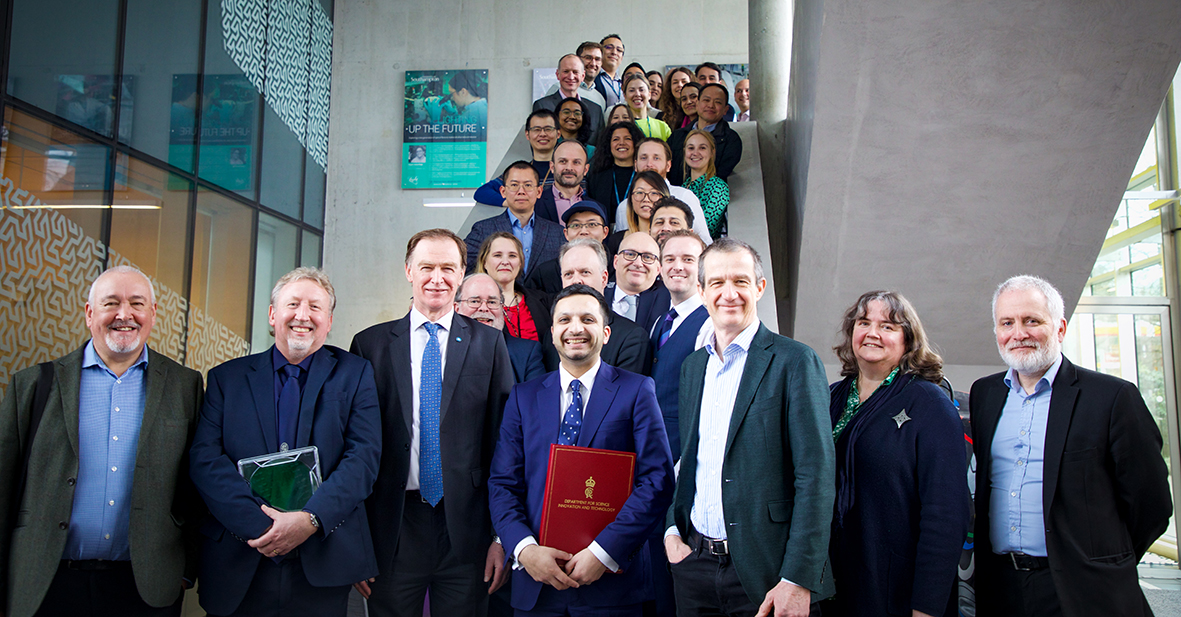
Professor Martin Kuball, front line, third from right at the launch event for the IKC. Credit: University of Bristol
We have had new funding confirmed!
30 September, 2022
Read more: https://bristol.ac.uk/news/2022/september/gallium-oxide-funding.html
MOCVD machine ready to be switched on!
27 April, 2022
Almost all low-carbon technology presently relies on Silicon (Si) - based power electronic devices. However, some is starting to be replaced with wide-bandgap semiconductors based on Gallium Nitride (GaN) and Silicon Carbide (SiC) to enable our daily lives, from charging our phones and laptops, to feeding wind or solar energy into the national grid. While these devices are serving us well, there is an unequivocal need to accelerate the reduction of our carbon footprint and to reduce the ongoing climate changes.
Ultra-wide bandgap semiconductor (UWB) devices based on Gallium Oxide (Ga2O3) will be the game changer for the next generation of power electronics , based on early data from Japan, the USA and Germany and our own group.
The Centre for Device Thermography and Reliability in the School of Physics, has installed an Agnitron metal organic vapour phase epitaxy (MOCVD) growth equipment, which is designed to deposit micron thick layers of Ga2O3, and its alloys with Aluminium, as well as heterostructures of these, as a base for advanced next- generation power electronic devices in Bristol.
The first of its kind in Europe, and will enable Bristol to lead the development of the next generation of zero carbon emission technology. In 20 years’ time, the resulting Ga2O3 ultra-wide bandgap power electronic devices will save our society >20% of its energy consumption by enabling improved energy transmission, motor drives and generator applications.
We are excited to be welcoming this machine and all the possibilities it represents!
Read more: https://www.bristol.ac.uk/news/2022/april/next-generation-zero-carbon-emission-technology.html.
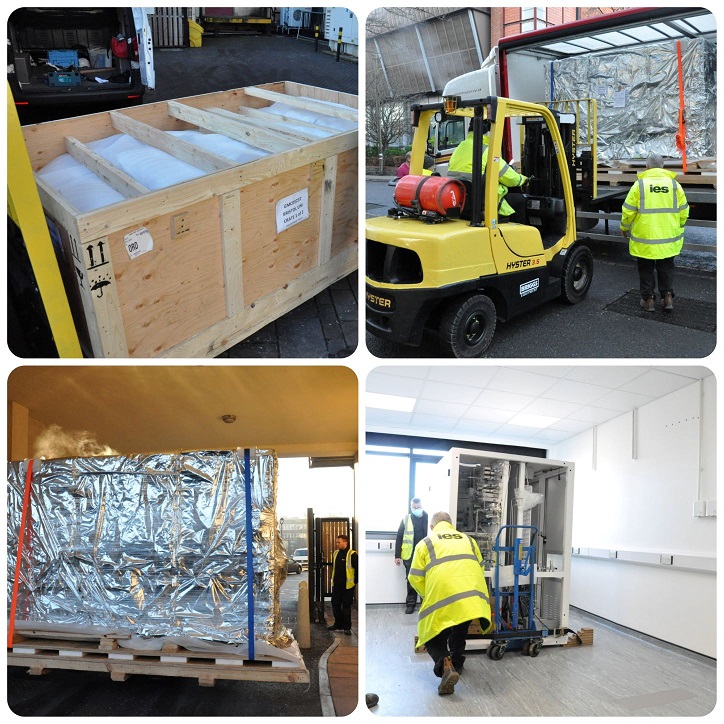
MOCVD installed by IES
Just started: Knowledge Transfer Partnership funded by Innovate UK jointly with Dynex Semiconductor
Prof Kuball and his Centre for Device Thermography and Reliability (CDTR) has been awarded a Knowledge Transfer Partnership (KTP) with Dynex Semiconductor. KTPs helps businesses in the UK to innovate and grow, and the CDTR is centre part of enabling UK business to develop a next generation of power electronics.
Global challenges in achieving net carbon zero, reducing air pollution and waste has driven the need to improve the efficiency of power electronic equipment, for example in electric vehicles, energy transmission and power quality management. This requires improved energy efficiency power electronics devices, reduction in size and weight reaching beyond the capability of the current silicon power devices that control these equipment. We are working jointly with Dynex Semiconductor to produce a next generation of Gallium Nitride (GaN) power electronics to exceed international competition.

Bundling unique European expertise for spaceborne devices
Knowledge Transfer Partnership awarded by Innovate UK to Prof Kuball’s teams jointly with Dynex Semiconductor
Ferdinand-Braun-Institut, SweGaN AB, and the University of Bristol are partnering in the European Space Agency funded Kassiopeia project. The teams join forces to develop high-performance Ka-band GaN MMICs (monolithic microwave integrated circuits). Applications for these devices include beam steering antennas for satellite communications and radar applications.
In March, the Kassiopeia project was launched to provide a value-added chain using internationally leading technology only available in Europe. The consortium project, led by Ferdinand-Braun-Institut (FBH) in Berlin, aims to demonstrate a fully independent European supply chain, from silicon carbide (SiC) substrates, gallium nitride (GaN) epitaxy, GaN device processing up to power amplifiers. For this purpose, Ka-band MMICs using novel epitaxy, processing, and circuit concepts towards highly efficient GaN and aluminium nitride (AlN) devices will be developed and demonstrated. The Ka-band frequency band is used, for example, in satellite communications.
The CDTR at the University of Bristol’s research within this program focuses on direct thermal measurements on active GaN transistors by using micro-Raman thermography and advanced device characterizations and modeling. This will provide a continuous feed-back to all device and epitaxial developments planned in Kassiopeia.
FBH contributes its industry-compatible Ka-band MMIC technology on 100 mm GaN-on-SiC wafers. “The unique selling point of our GaN MMIC technology is its highly reproducible and reliable iridium sputter-gate technology”, emphasizes Dr. Joachim Würfl, head of FBH’s Power Electronics Department. “This technique reduces dynamic losses (gate lagging) to values up to two times less than competing institutional and industrial technologies.” The technology is also known to significantly improve device reliability. Together with new approaches in terms of process technology and circuit concepts both targeting for parasitic loss reduction highly efficient Ka-band MMICs will be developed. The groundbreaking technology will thus provide advantages in performance and reliability, which are particularly important for spaceborne devices.
SweGaN participates with its unique buffer-free solution for GaN-on-SiC epiwafers, QuanFINE®, bringing its expertise in epitaxial layer design and optimization to the project. SweGaN will also supply in-house developed semi-insulating SiC substrates for evaluation. "We are excited to participate in this ESA-aligned project together with FBH and University of Bristol, shares Jr-Tai Chen, CTO, SweGaN. Conventional GaN-on-SiC materials for Ka band applications still lack maturity, leaving significant room for innovation and improvement. SweGaN will introduce its revolutionary epitaxial manufacturing process to address the challenge.”
The Kassiopeia project is funded under the ESA ARTES Advanced Technology Programme: “European Ka-band high power solid-state technology for active antennas”.

SEM image of gallium nitride MMICs
A sustainable energy grid for the future
A U.S. Department of Energy (DOE) award is empowering the Centre for Device Thermography and Reliability (CDTR) at the University of Bristol to create a resilient and sustainable electricity grid with the use of next-generation ultra-wide bandgap materials and devices.
The four-year, $12.4 million award from the DOE’s Office of Basic Energy Sciences, establishes a Research Center led by the University of Arizona, with the CDTR here in Bristol, the only non-US partner involved. Professor Martin Kuball, Director of the CDTR and Royal Academy of Engineering Chair in Emerging Technologies, says “we are excited to be part of this large US funded activity to enable the technology needed for so-called smart grids and helping our society to achieve zero carbon emission”. The Center will employ creative, multi-disciplinary scientific teams to tackle the toughest scientific challenges preventing advances in energy technologies, as well as investigating fundamental questions about ultra-wide bandgap semiconductors.

Picture credit: Karsten Wurth on Unsplash
Ultra-wide bandgap semiconductors are for example aluminium nitride, boron nitride or diamond, which possess extraordinary physical and electrical properties. Devices constructed from them can operate at higher temperatures, voltages and frequencies than Silicon (Si), making them significantly more powerful and energy efficient than conventionally used Si-based power electronics. Through the use of ultra-wide bandgap materials, power substations could potentially shrink a hundredfold — to virtually the size of a suitcase — saving space and increasing the reliability of the grid. Wide band gap materials can also enable better integration of renewable energy sources into any electricity grid. While electricity grids traditionally only delivered power in one direction — from power plants to consumers — today’s grids must be flexible, giving and taking power as required. Renewable energy sources such as wind and solar power supply energy under the right conditions, but their cells and batteries require recharging when there is not enough wind or sun. A “smart grid” to meet these multidirectional demands is within reach, thanks to the research that the CDTR is doing.
Professor Martin Kuball named as Royal Academy of Engineering Chair in Emerging Technologies
Professor Kuball is one of eight engineering academics across the UK to receive support from the Royal Academy of Engineering’s largest research funding scheme—the Chairs in Emerging Technologies – which has allocated a total of £22 million to support these innovative researchers and global leaders in their fields whose projects made it through the rigorous selection process in the face of stiff competition.
For his project as Chair, ‘Ultra-wide bandgap emerging power electronics for a low-carbon economy’, Professor Kuball aims to develop a new class of semiconductor power electronic devices using ultra-wide bandgap materials such as gallium oxide, boron nitride and aluminium nitride. Thanks to the outstanding properties of these materials, the new devices will be compact, highly versatile and energy efficient. This new generation of power electronics is the key to transforming a wide range of real-life applications, from data centres and motor drives to electric vehicle chargers to smart grids, all contributing to the realisation of a greener society.
Read more about this exciting appointment.








